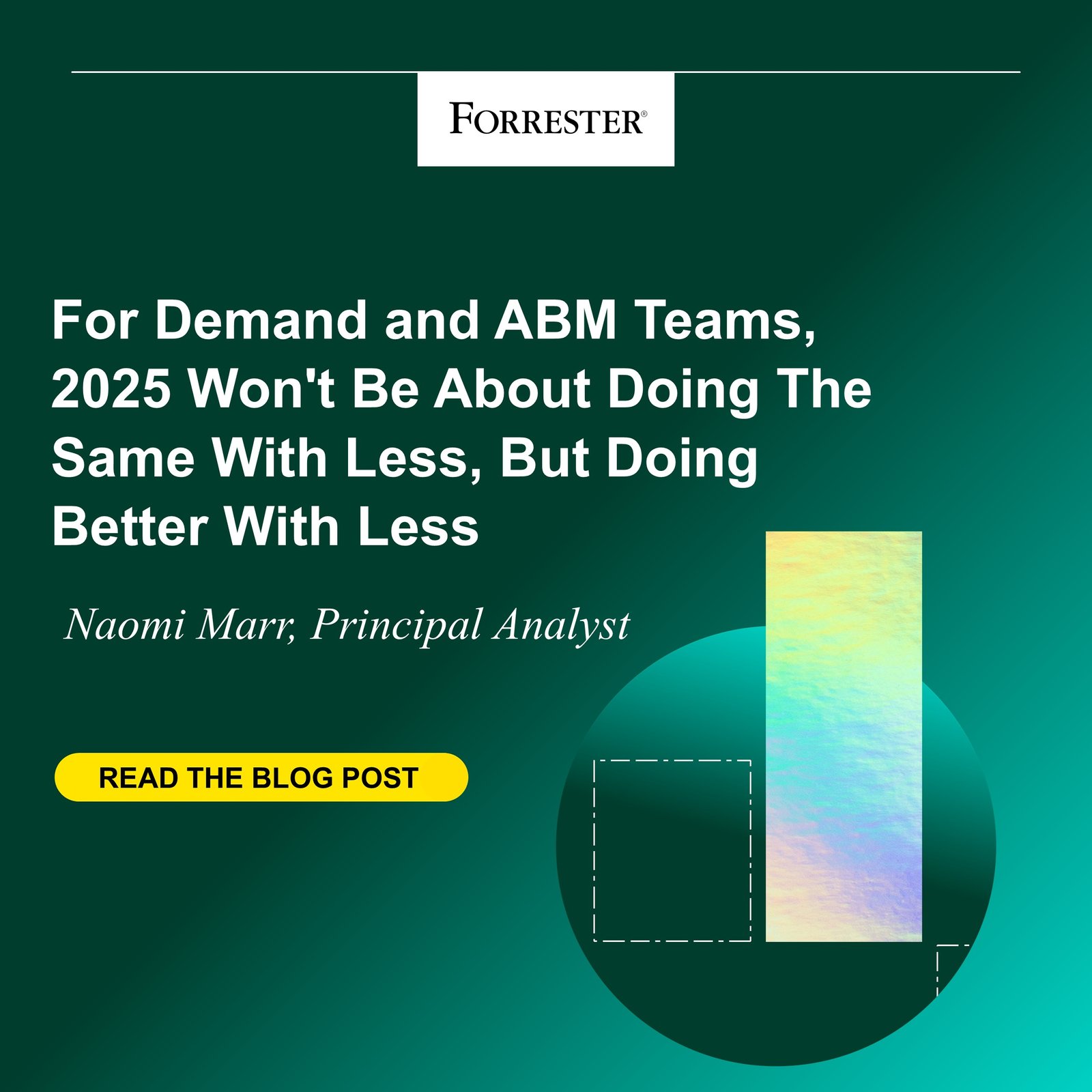Analyzing the results of Forrester’s Budget Planning Survey, 2024, it’s apparent that marketers will still be plagued by “tight budgets” and “a lean year” in 2025. On the surface, it may appear as if most budgets are increasing, as 82% of global B2B marketing decision-makers report their budgets being increased by 1% or more. But once you adjust for inflation, it’s the same old story, as only 35% of organizations will see a real increase in budgets (with 31% of the 35% saying that the increases would be in the 5–10% range and 4% saying that their budgets would increase by 10% or more).
At the same time, the range of new options and opportunities available to demand and ABM marketers has expanded significantly — driven by data proliferation, technology advancements, and the unstoppable evolution of B2B buying behaviors. Marketers cannot ignore the possibilities but must decide how to do better (i.e., take advantage of the advancements) with the same budgets. The difficulty is in deciding the best level of funding for each. For example, generative AI is a compelling investment opportunity, but most marketers will need to find other areas to trim to offset any increase in AI. Two of the most important areas for investment that all organizations should focus on in 2025 are:
- Data, signals, and insights. Areas such as training large language models to improve AI results, mastering signal visibility, improving data quality and comprehensiveness, and designing your zero-through-third-party data strategy must all be considered for investment. Building a 360-degree view of buyers and customers and crafting a customer experience that meets their needs at every stage of the customer lifecycle (i.e., detected through customer upsell/cross-sell) is a requirement for continued growth in 2025.
- People and workflows. Businesses acknowledge that changes are needed as sales, marketing, and customer success disciplines mature and evolve because of buyer behavior changes. Buyers conduct their own self-guided research and decide when, or if, to contact you about a purchase. And when they are ready to make contact, they expect you to have all their signals (i.e., engagement with your company) sorted, analyzed, and prioritized to provide a better buyer experience. Shifting marketing priorities to focus on buyer experience — both within marketing but also in partnership cross-functionally with the entire business — must be a major 2025 focal point. Priorities such as capturing the most value from your event strategy, onboarding your chatbot as if it were an employee, and having frontline marketing orchestration managers solve for the fact that marketing is an obstacle in revenue process transformation efforts will all be important, with a forward-thinking roadmap required.
The key takeaway from Forrester’s Budget Planning Survey, 2024, is that it is not only about doing more with less budget but also about taking advantage of the many investment opportunities with what you already have. Marketing organizations may never have the ideal budget — but by being strategic, they can do better.
Those that manage to do better with what they have will gain an edge in 2025 — and exponentially impact their future revenue growth. Read the comprehensive report, Budget Planning Guide 2025: Demand And ABM, to benchmark your budget percentages against peers and get Forrester analysts’ detailed takes on the opportunities, divestment considerations, and recommended areas of experimentation for 2025.
